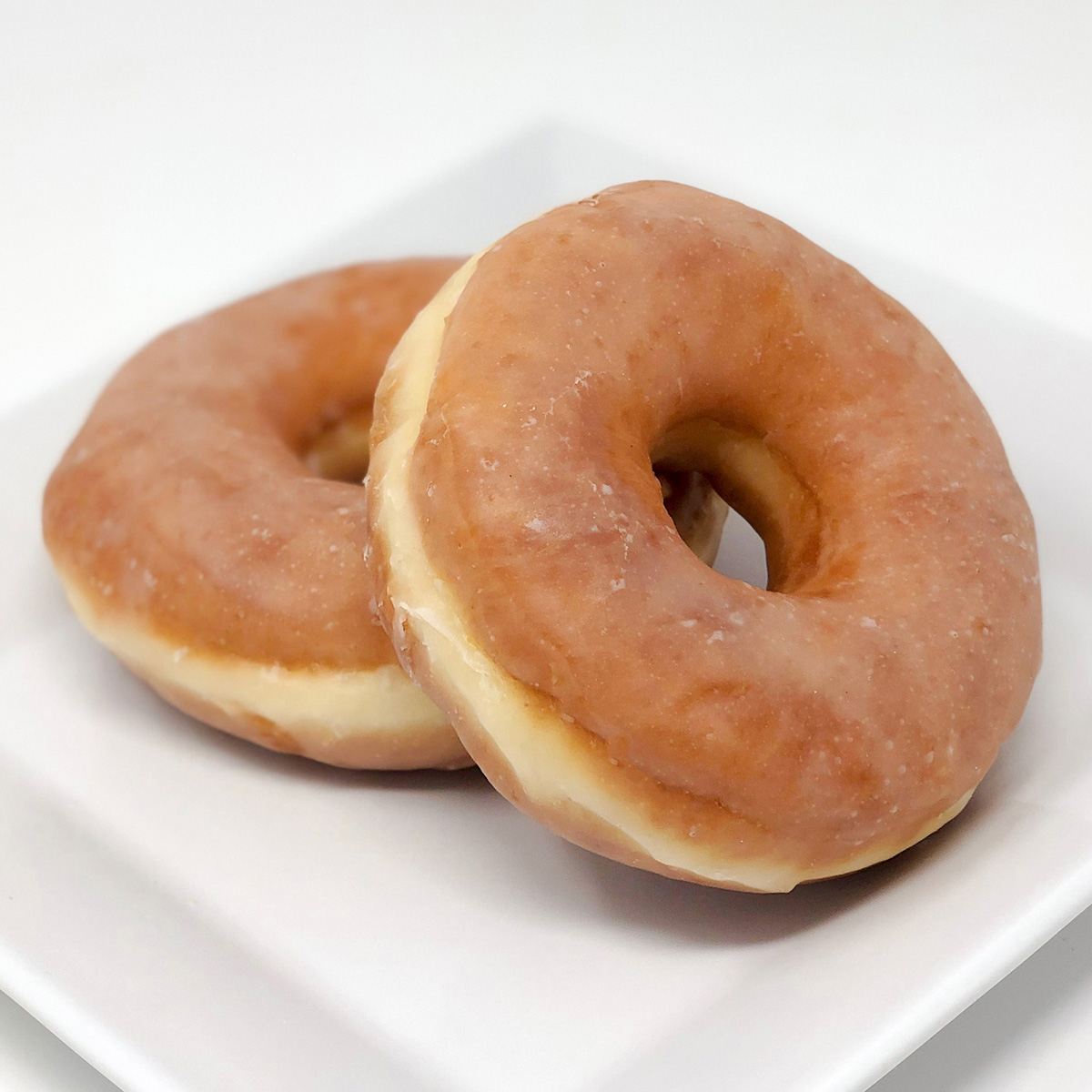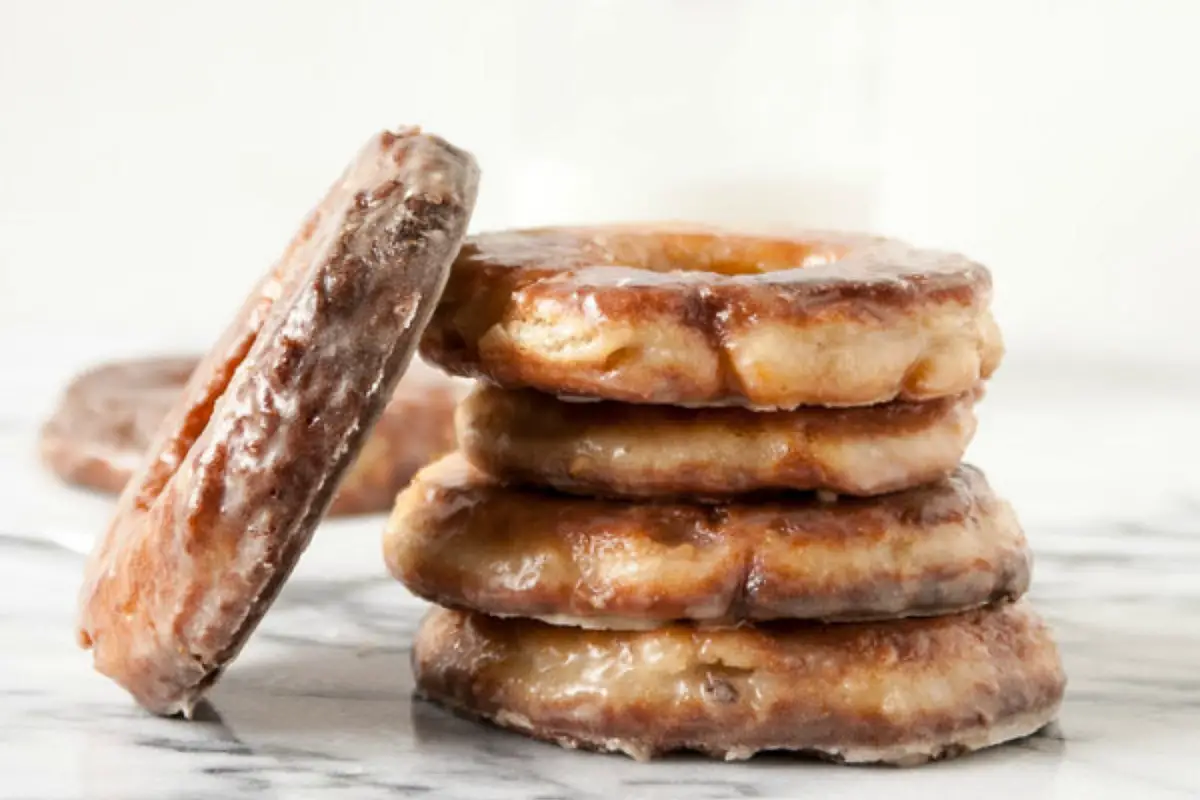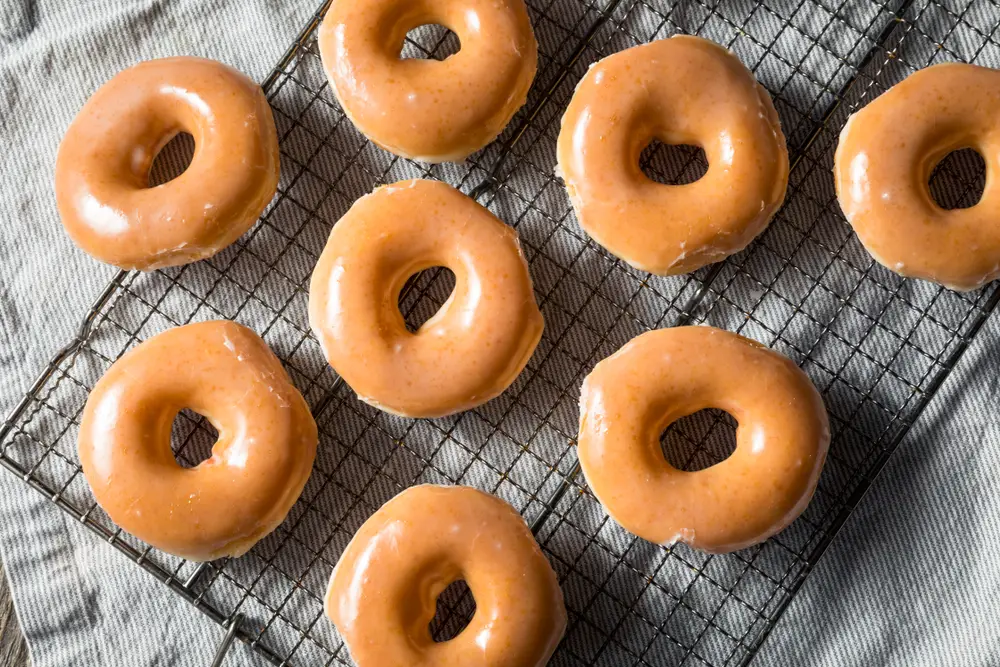Donuts are some of the most delicious snacks you can eat. You can find them in convenience stores, bakeries, and specialized donut shops, and you can even make them yourself. Plus, there are so many variations of these fried dough rings that you’ll definitely find some that you like.
There are cake donuts if you prefer a more dense dough and yeast donuts if you like them more fluffy. Then there are the filled donuts, which you can stuff with cream, jams, or custard. And then they’re also the plain ones which you can top with powdered sugar and cinnamon.
So, which ones are the best? That’s up to you! But, you should definitely try all types of donuts as they all have something unique to offer.
In this article, we’ll give you all the information you need about glazed yeast donuts, as well as their ingredients and a step-by-step recipe to follow.
Keep on reading if you want to learn how to make the best glazed yeast donuts!
History About Glazed Yeast Donuts
Donuts are essentially a leavened fried dough usually shaped like a ring. They consist of very few ingredients and are pretty easy to make yourself. Depending on the leavening agent used, donuts are divided into two categories: cake donuts and yeast donuts.
Cake Donuts
Cake donuts utilize baking powder or baking soda for the leavening process and cake flour with relatively low gluten content. This leads to a dough that is more chewy and dense and holds better to different types of filling.
Yeast Donuts
Yeast donuts, on the other hand, go through a biological leavening process with yeast. The yeast eats the sugar in the dough and begins to multiply and rise, giving a fluffy and airy dough with lots of pores on the inside. Yeast donuts are also much lighter, so you can enjoy more of them!
The first official mention of a fried dough resembling donuts comes from the German cookbook “Küchenmeisterei” (Mastery of the Kitchen), printed in 1485. Dutch settlers are believed to have brought donuts to New York.
The first American cookbook that mentions donuts is “The Frugal Housewife: or, Complete Woman Cook”, published in 1803.
Did you know:
- The traditional spelling for the word is “doughnut” (which makes sense since it includes the word dough). The term donut emerged in the United States as a way to make the word easier to pronounce for foreigners. It became dominant because of the popularity of the franchise Dunkin Donuts from Massachusetts, which was the first to officially use the term “donut”.
- There’s actually a National Doughnut Day! It’s celebrated in the United States every year on the first Friday of June. It’s an excellent opportunity to make some delicious glazed yeast donuts and enjoy them with family and friends!
- In the United States, and particularly in Southern California, it’s common for donuts to be packaged in pink boxes. This originates from Ted Ngoy and Ning Yen, who ran a very successful local donut shop, and used leftover pink boxes because they were cheaper than red boxes.
Ingredients & Supplies

While glazed yeast donuts are easy to make, they require a bit of time for the dough to rise, so you’ll need to account for that. Here are the ingredients you’ll need to make perfect glazed yeast donuts:
For the donuts:
- 1 ¼ cup whole milk
- 2 eggs
- 1 stick of butter (8 tablespoons)
- ¼ cup granulated sugar
- 4 ½ cups all-purpose flour (plus some more for the dough rolling)
- 1 package of active dry yeast (2 ¼ teaspoons)
- 1 teaspoon salt
- Neutral oil for frying
For a simple glaze:
- ¼ cup milk
- 2 cups powdered sugar
- 1 teaspoon vanilla extract
You’ll also need a few kitchen tools and supplies. Some of these are optional, but you’ll get the best results if you use them:
- Stand mixer or hand mixer (optional)
- Bowls
- Rolling pin
- Donut cutter (optional)
- Baking sheets
- Dutch oven (or any other heavy bottom pot)
- Cooling rack (optional)
Step by Step on How to Make Glazed Yeast Donuts

Dough
- Start by heating up the milk until it’s warm (about 90-100 degrees). If you don’t have a digital thermometer, try drinking it. It should be warm, but it shouldn’t burn you. If your milk is too hot, it will kill your yeast.
- In a large bowl or the bowl of your stand mixer, mix the milk and yeast and let it sit for about 5 minutes, or until the mixture becomes foamy. If you don’t see foam and bubbles, your yeast might be dead or expired.
- Add the butter, sugar, eggs, and salt to the mixture and mix using the dough hook attachment at low speed to incorporate all ingredients. If you don’t have a standing or an electric mixer, you can make the dough entirely by hand, but it will take more time and effort.
- Once the wet ingredients are incorporated, add the flour in two batches until the dough starts to pull from the bowl’s sides. If the dough seems too wet, you can add a bit more flour, but don’t overdo it, as you want a light and fluffy dough.
- Once the dough is smooth and homogenous, transfer it into a lightly greased bowl. Cover with a towel or plastic wrap, and let it rise at room temperature for about 1 hour, or until it has doubled in size.
- Transfer the dough onto your counter that’s floured well. Using the rolling pin, start to roll your dough until it reaches about ½ inch-thickness. Flour your donut cutters and start cutting the donuts. If you don’t have donut cutters, you can use large cookie cutters, or a drinking glass and a shot glass for the hole. You can also knead the donut holes and any other scraps, let them rest for a bit, and repeat to make more donuts.
- Carefully place the donuts on a floured baking sheet with enough space between them to rise. Use more baking sheets if you have to. Cover them up, and let them rest for about 45 minutes until they become puffy.
Frying
- Fill up your pot or dutch oven with neutral oil until the middle. Preheat the oil until it reaches a temperature of 350-375°F.
- Start adding the donuts to the oil gently, so they don’t fall apart. You can use a metal spatula if you can’t lift them with your fingers. Don’t worry if they deflate a little, as they will puff up again during frying.
- Flip the donuts every minute so they cook evenly. Cook the donuts until they’re a deep golden brown color. Once they’re done, place them on a wire rack to cool off. You can also use a plate lined with paper towels. When they’ve cooled enough to handle, you can start glazing them.
Glaze
- Mix the milk, powdered sugar, and vanilla together, using a whisk, until they’re well-mixed.
- When your donuts are cooled but still warm, dip them in the glaze and flip them, so the glaze coats the entire donut.
- Place them on a wire rack to allow the glaze to harden.
Conclusion
All in all, glazed yeast donuts are a great snack to enjoy with your friends and family. They’re also effortless to make, and you can make them with your kids or grandkids, which will be extra fun. Follow our recipe and tips to make the perfect glazed yeast donuts!
FAQ
What Is the Difference Between Cake Donuts and Yeast Donuts?
The difference between cake donuts and yeast donuts comes down to the leavening agent used in each dough. Cake donuts are often made with baking powder, giving them more density and a cake-like texture. Yeast donuts are made with active yeast, which puffs the dough up significantly, and makes lighter and fluffier donuts.
Are Glazed Yeast Donuts Vegan?
Unfortunately, the traditional recipe for glazed yeast donuts is not vegan, as it contains animal products like eggs, butter, and milk. But, many other vegan recipes swap butter for margarine, whole milk for soy or almond milk, and don’t use eggs at all.
What Other Kinds of Glaze Can I Use on Glazed Yeast Donuts?
The traditional glaze used in glazed yeast donuts is easy to make and has a sweet vanilla flavor. You can totally make your own favorite glaze for your donuts, though. Some ideas for alternative glazes include:
- Colored glaze: Just add a few drops of your favorite food coloring.
- Chocolate glaze: Simply add 2-3 tablespoons of cocoa powder when mixing the milk and sugar. You might also need some additional milk, so the glaze isn’t too thick.
- Maple glaze: Substitute the vanilla extract with ½ – 1 teaspoon of your favorite maple syrup.
Can I Store Leftover Glazed Yeast Donuts?
If you’ve already glazed your donuts, you can store them in an airtight container at room temperature for up to 1 day. Unglazed donuts hold much better, though. You can put them in the fridge in an airtight container, and they can last up to 4 days.

